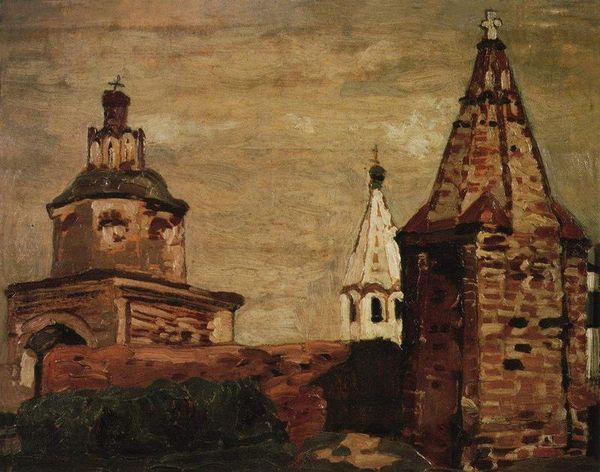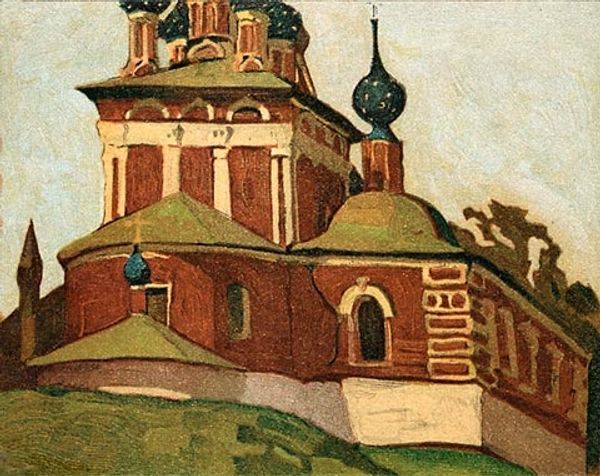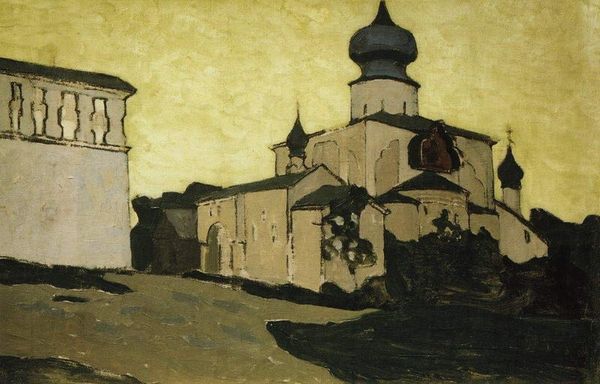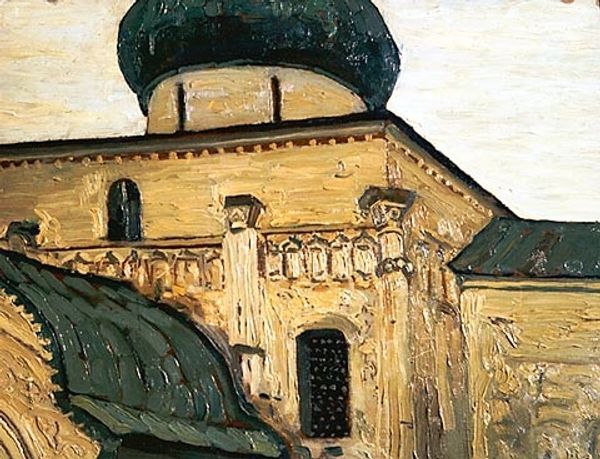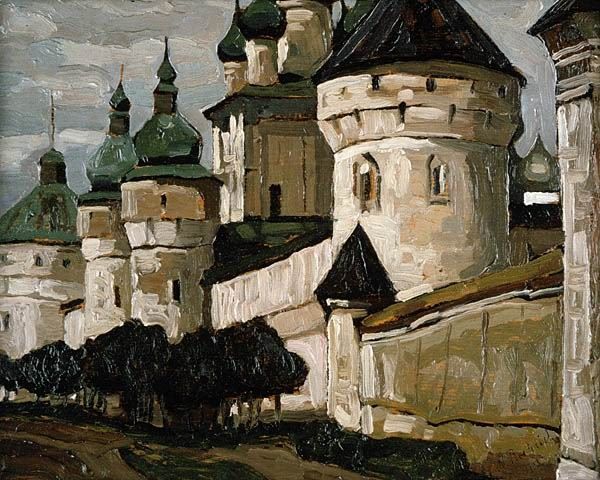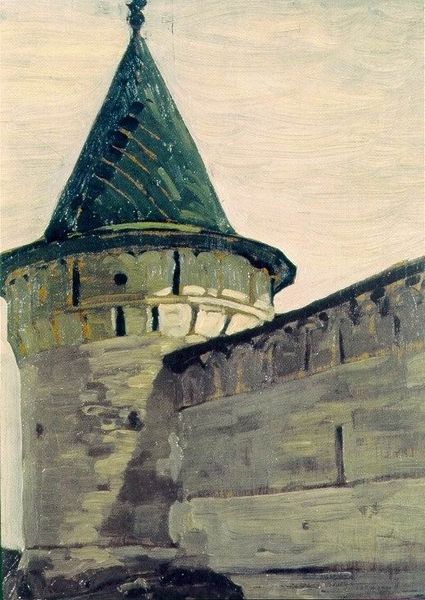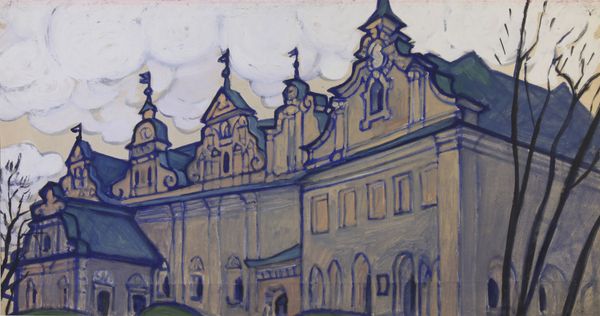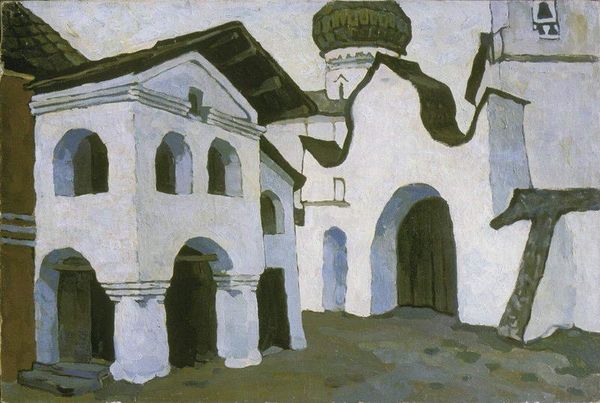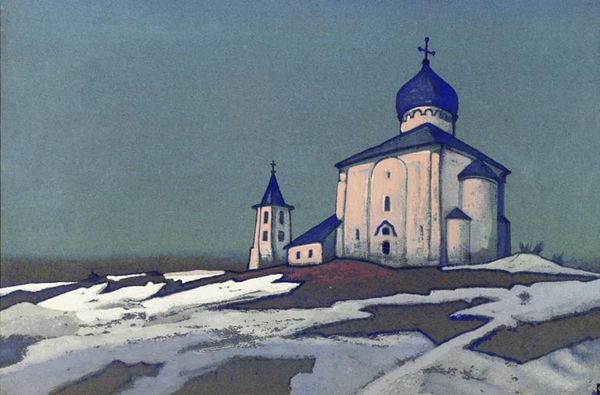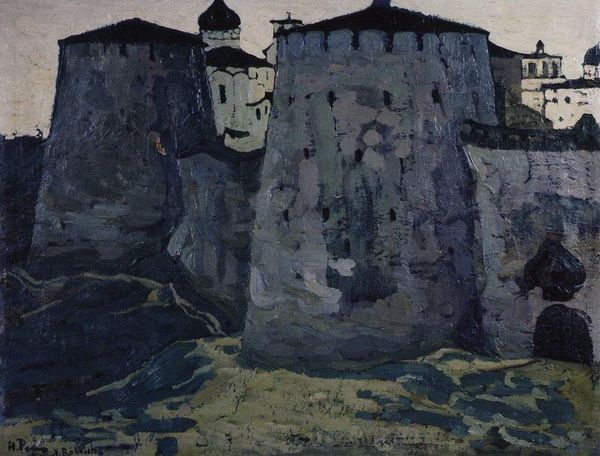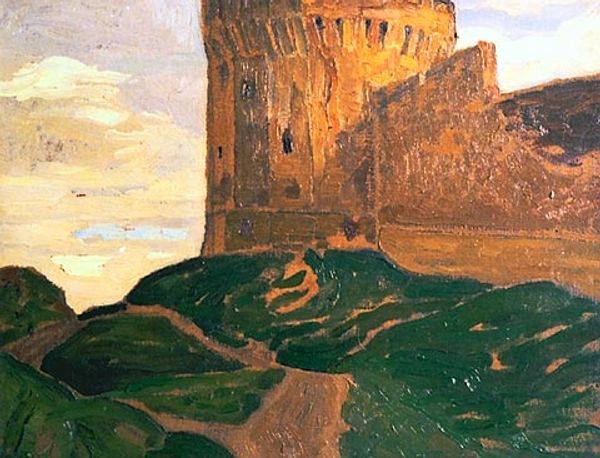
Rostov Veliky. Attics of princely houses. 1903
0:00
0:00
nicholasroerich
State Museum of Oriental Art, Moscow, Russia
painting, oil-paint, architecture
#
medieval
#
painting
#
oil-paint
#
landscape
#
oil painting
#
russian-avant-garde
#
cityscape
#
history-painting
#
architecture
#
realism
Copyright: Public domain
Editor: This oil painting, "Rostov Veliky. Attics of princely houses." created in 1903 by Nicholas Roerich, depicts a cluster of ancient buildings against a stormy sky. There's something austere yet romantic about it. How do you interpret this work? Curator: Roerich was deeply invested in Russian history and folklore, so viewing this through that lens opens a lot of doors. It's not simply a landscape; it's an invocation of a particular, arguably idealized, vision of Russia's past and its unique cultural identity in the face of rapid modernization. How do you see the use of color contributing to this idea? Editor: I notice the contrast between the warm colors of the buildings and the cool tones of the sky. It feels like a struggle between the past and the present, or maybe tradition and change. Curator: Precisely. The ‘attics of princely houses’ are not just architectural details; they become symbols of a fading aristocracy and a hierarchical social order. Consider also the historical context; 1903 was a time of considerable social unrest in Russia. Roerich might be subtly critiquing or perhaps romanticizing the pre-revolutionary social structures. Do you think he's advocating for a return to this past, or just mourning its loss? Editor: That’s a really interesting point. I initially saw it as a purely aesthetic work, but knowing that adds so much depth. Maybe it's both a lament and a subtle critique, a reflection on power dynamics and their inevitable decay. Curator: It's a powerful piece when we consider its place within both art history and the turbulent political landscape of the early 20th century. It encourages us to confront how we interpret history and whose stories are being told. Editor: I'll definitely look at Roerich's work differently now. It’s amazing how much context can shape your understanding of art.
Comments
No comments
Be the first to comment and join the conversation on the ultimate creative platform.

